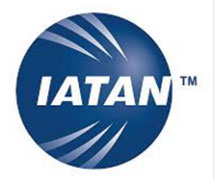Japan Kyoto to Tokyo Walking
Kyoto, Japan to Tokyo, Japan
Highlights:
- Explore Kyoto's ancient temples, UNESCO-listed Kinkaku-ji and Ryoan-ji, and the bamboo forest of Arashiyama
- Journey to Nara's Todai-ji, scenic and sacred Mount Koya, and electric Tokyo
- Follow shoguns' shadows along the spectacular Nakasendo Way through medieval towns, lush valleys, and misty forests
Important Trip Details:
Moderately paced hikes of up to nine miles a day through the Japanese countryside, visiting villages, temples, and artisan workshops. Plus two days of extensive city walking and cultural touring, linked by scenic train rides.
Minimum Age: 12
- Adventure and Active
| Additional Offers |
ID: 8364333
|
ID: 8364332
|
ID: 8364334
|
ID: 8378222
|
ID: 8364336
|
ID: 8364337
|
ID: 8364338
|
ID: 8364339
|
ID: 8364340
|
ID: 8364341
|
|---|---|---|---|---|---|---|---|---|---|---|
|
|
|
|
|
|
|
|
|
|
|
|
|
ID: 8364333
|
ID: 8364332
|
ID: 8364334
|
ID: 8378222
|
ID: 8364336
|
ID: 8364337
|
ID: 8364338
|
ID: 8364339
|
ID: 8364340
|
ID: 8364341
|
Day: 1, duration: 2
Hotel Granvia Kyoto
The Hotel Granvia Kyoto is a four star property easily accessible within the JR Kyoto Station. Its sleek architectural decor is paired with modern amenities in each room, such as complimentary Wi-Fi, electric kettles and flat screen TVs. Guests can choose to relax in the hot tub, wander through the thousands of pieces of art work on the property or walk over to the Kyoto Tower.
Day: 1, duration: 2Hotel Vischio Kyoto
The Hotel Vischio Kyoto is a four-star property and sister hotel of Hotel Granvia Kyoto, located just two minutes from the JR Kyoto Station, easily accessible via train and subway lines. Its sophisticated urban decor is paired with modern amenities in each room, such as complimentary Wi-Fi, electric kettles and flat screen TVs. Guests can choose to relax in the hot tub, work out in the fitness room, or walk over to the Kyoto Tower.
Day: 3, duration: 1
Renge-in
Renge-in is a rare opportunity to stay in a shukubo, an authentic Buddhist temple lodging attended by young monks in training. Renge-in is both a temple lodging and the family temple for the entire Tokugawa clan. The temple has a long history and was refurbished in 2015. Guests eat Buddhist vegetarian food and sleep on futons in traditional rooms with sliding screens and shared bathroom facilities, and have the opportunity to attend morning prayers with the monks.
Day: 3, duration: 1
Mitsugon-in
Shojoshin-in
Shojoshin-in is a shukubo, or lodging, in a Buddhist temple. In fact Shojoshin-in is attached to one of Mount Koya's oldest Buddhist temples! Built as a thatched hut more than 1,150 years ago, today it boasts attractive 150-year-old buildings with 22 guest rooms and two large communal bathing areas — one for men and one for women — with beautiful Hinoki cypress wood bathtubs.
Day: 3, duration: 1Eko-in
Eko-in is a temple on Mt Koya with a 1,200-year history, and offers a rare opportunity to stay in a shukubo, authentic Buddhist temple lodging attended by young monks in training. Guests eat Buddhist vegetarian food and sleep on futons in traditional rooms with sliding screens and shared bathroom facilities, and have the opportunity to attend morning prayers with the monks.
Day: 4, duration: 1
Piazza Hotel Nara
A fusion of Japanese and European sleek design, the Piazza Hotel Nara is a short walk from Nara Park and offers many modern amenities, including complimentary Wi-Fi. Watch as chefs cook authentic Teppanyaki-style dishes in front of your table at the live dining restaurant. Afterwards, head over to the hotel's jazz bar for live musical performances or relax with cocktails on the rooftop terrace.
Day: 5, duration: 1Hotel Hanasarasa
Hotel Hanasarasa is located in the Nakatsugawa Onsen area, sitting at the base of Mount Ena. It is close to Magome, gateway to our walk on the Nakasendo Trail. The hotel's baths are onsen baths (mineral hot springs) and the baths in this area are known for their beautifying properties! Adjoining the hotel is a larger onsen facility with a selection of indoor and outdoor hot springs baths and swimming pools. Meals at the facility showcase local cuisine, including river fish and the Hida beef of Gifu prefecture. Rooms are equipped with en suite toilets and other amenities; bathing facilities are shared in the case of most guest rooms.
Day: 6, duration: 1Keigetsu
A traditional Japanese inn nestled between lush mountains and clear springs, Keigetsu's large onsen, or hot spring baths are fed by the Hirugami spring. Soak in mineral-rich waters said to smooth and hydrate the skin. Sleep in traditional style rooms with tatami mats and futons or Western bedding, all with ensuite toilet and shower or bathtub. Dine on multicourse kaiseki meals with seasonal ingredients including Murasawa beef, a rare delicacy.
Day: 7, duration: 1
Onyado Tsutaya
A 350-year-old traditional Japanese inn, Onyado Tsutaya welcomes guests with both open-air mineral and indoor herbal onsen (hot spring baths) with the sounds of the Kiso River nearby. Ideally located for those walking the Nakasendo Trail, the inn offers traditional rooms with sliding screens and tatami mats, which come with either futon or Western style bedding. Rooms are equipped with en suite toilets and other amenities; bathing facilities are shared. Sample traditional cuisine with ingredients unique to Kiso with a multicourse dinner.
Day: 7, duration: 1
Komanoyu
Komanoyu is nestled in the mountains above Kiso Fukushima and has lovely, big onsen baths with indoor and outdoor sections (separate baths for men and women), fed by natural hot springs. Just grab your traditional Japanese towel for modesty and pad down to the bathing space for complete relaxation (all bathroom facilities are shared in the case of most guest rooms; in limited cases, some rooms also have en-suite toilet and sink - these rooms can not be guaranteed). Sleep well atop futons in the spacious guest rooms, and enjoy traditional Japanese dishes. Wi-Fi is available in the lobby area.
Day: 7, duration: 1Tsutaya Tokinoyado Kazari
A modern ryokan, Tsutaya Tokinoyado Kazari welcomes guests with both indoor and outdoor hot spring pools. Ideally located for those walking the Nakasendo Trail, the inn offers traditional rooms with sliding screens and tatami mats, which come with either futon or Western style bedding. Rooms are equipped with en suite toilets and other amenities; bathing facilities are shared. Sample a multi course dinner of traditional cuisine with ingredients unique to Kiso during your stay.
Day: 8, duration: 1
Iseya
Iseya is a traditional minshuku established in 1818. The friendly, family-run inn occupies the original wooden building and a newer annex. There are 10 tatami-mat guest rooms, several guest toilets and wash basins, plus two rooms with Kiso umbrella pine tubs for bathing (all bathroom facilities are shared). Wi-Fi is available in the rooms. Meals are Japanese-style set menus featuring local specialties.
Day: 9, duration: 2
Celestine Tokyo Shiba
Experience the Japanese aesthetic in the heart of Tokyo at the Celestine Tokyo Shiba. Stay in a historic district formerly occupied by the residences of feudal lords, today filled with embassies and luxury high-rise buildings. Touches of luxurious leather and marble complement the natural wood and large windows in the rooms. A leafy patio, restaurant, café, spa, and fitness center offer plenty of ways to relax.
Tomomi Shimazu
Tomomi was born and raised in Tokyo. After completing her degree in international relations, she studied in the UK and the US. Later she lived in Hawaii and Israel for years and traveled extensively in Europe, the US and Middle East. She now lives in Tokyo, close to its center and loves gardening, walking, cycling and yoga. Tomomi enjoys guiding and sharing her knowledge of both traditional and urban cultures of Japan. Meet Tomomi on MT Sobek's adventures in Japan.

Toshi Kida
Toshiyuki was born in Nagano Prefecture, Japan, and grew up in Sekiyama in Niigata Prefecture. His interest in travel became apparent from the very moment he played with a globe as a child and it turned into a life-long passion. After graduating from university in 1978, he moved to Canada and now divides his time between Canada and Japan. Toshiyuki has guided the Nakasendo and Kumano Kodo trails since 2013. He has traveled to over 200 cities in 25 countries in America, Europe, and Asia.

Atsuko Iketsu
Atsuko was born in Osaka, an old merchant city, and brought up in Kamakura, an ancient capital of samurais. Since childhood she has visited many temples and shrines, which might have fostered her love for Japanese culture. She majored in French at Sophia University in Tokyo and lived in Los Angeles, Bangkok, London and Paris for 11 years because of her husband's work. She loved to talk with locals in these places and enjoyed communication wherever she lived. After coming back to Japan, Atsuko was passionate about introducing Japanese culture to foreign visitors, and worked at Edo-Tokyo Museum as a volunteer guide for 7 years. Now she guides throughout Japan. On each trip, she enjoys communicating with her group members and always tries her best to show the real beauty of Japan and theJapanese way of thinking and living.

Inclusions
Expertise and services of our experienced adventure guides
All accommodations as noted in the itinerary
All breakfasts, almost all lunches and dinners as noted in the itinerary
Snacks and water between meals
Additional regional guides and experts on many trips
Comprehensive Trip Planner with detailed pre-trip information
Private guided tours at historic sites, museums, wineries and other select attractions as noted in the itinerary
Special events and other select attractions as mentioned in the itinerary
All gratuities at hotels and restaurants
Equipment and experienced guides for activities as described in the itinerary
Park and other entry fees (unless otherwise noted)
Fares for trains, ferries and other modes of travel as listed in the itinerary
Select transfers as mentioned in the itinerary
Baggage transfers and porterage
Exclusions
International airfare, airport taxes, and excess baggage fees
Alcoholic beverages (MT Sobek provides wine at select events)
Gratuities for MT Sobek guides and guide-drivers
Travel Protection Program
Personal expenses
Reason #01
MT Sobek has been operating award-winning adventures in Asia since 1969, working with the best local guides to ensure an immersive and unforgettable adventure.
Reason #02Perfected over 20 years, this popular 11-day Kyoto to Tokyo adventure is a well-paced walking tour into the heart of Japan. Explore idyllic landscapes and stay at charming shukubo and ryokan.
Reason #03Our local expert guides go the extra mile and are the perfect travel companions. Come away with a deep understanding of Kyoto, Tokyo, and the historic Nakasendo Trail.
ActivitiesModerately paced hikes up to 4-9 miles a day on paved and dirt trails, plus 2 days of extensive city walking and cultural touring, linked by scenic train rides.
LodgingEnjoy stays in traditional ryokans (inns) — many with onsen (hot springs) — and comfortable hotels with modern amenities.
ClimateSpring and fall temperatures range from 50°F to the high 70°'s F, and there is a fair chance of rain.
Who will meet me on arrival?Your MT Sobek guide will meet you at the hotel in Kyoto the evening of Day 1. We provide instructions for getting on your own from either Osaka airport to Kyoto (taking the Haruka Limited Express train from Osaka Kansai/KIX or the airport limousine bus from Osaka Itami/ITM).
What days will I be without my luggage during this trip?We use Japan's “takuhaibin” luggage courier system so you can travel light on train and bus journeys. To make this work seamlessly, we ask that you bring your regular suitcase (or duffel), your daypack, AND a small foldable duffel. Your larger suitcase will be sent ahead on two occasions - from Kyoto on Day 3, arriving to the Kiso Valley on Day 5; and from Tsumago on Day 7, arriving in Tokyo on Day 9. While your suitcase is in transit, you will carry your small duffel with your essentials for 2 nights at a time, along with your daypack, on the train or bus. Once you arrive at your destination, we take care of transporting your small duffel to your accommodation so you only ever need to carry a daypack on your hikes. We find this is a fantastic way to get an authentic travel experience, while still having access to your larger luggage for most of the trip.
Can I travel to Japan if I’m gluten-free?We are unable to guarantee 100% gluten-free meals, as there is some gluten in soy sauce and in miso, which are core seasoning ingredients in Japan and very difficult to avoid. That said, we are happy to request meals that don't include wheat noodles, tempura, breaded items, or bread. Please let us know your needs as soon as possible so we can manage your request.
We are more than happy to request meals with no apparent animal products, but meals without any traces of fish are not possible to arrange due to the ubiquitous nature of dashi (broth flavored with dried fish flakes). Dashi is foundational to Japanese cuisine and is a small component of many dishes. We are not able to arrange for all dishes to be prepared without dashi; you can decide not to eat them but may then need to supplement meals with snacks that you supply yourself. Many of our vegetarian guests who have doubts about dashi before coming to Japan find that they enjoy the delicious dishes made with this subtle flavoring.
A shukubo is an authentic Buddhist temple lodging attended by young monks in training, and you'll have the chance to stay at a shukubo for one night (Day 3) at Mount Koya. These have simple guest rooms with sliding screens and you sleep on futons atop tatami mat floors. There are shared bathroom facilities - separate for men and women. You'll dine on Buddhist vegetarian food and will have the opportunity to attend morning prayers with the monks, as well as to enjoy traditional gardens.
At MT Sobek, sustainability isn’t just a principle; it’s woven into the very fabric of how we operate. We don’t simply observe the world’s unique cultures and fragile ecosystems—we take an active role in their preservation. Supporting organizations dedicated to environmental conservation and community well-being is part of our DNA. Over the years, we have contributed over half a million dollars to conservation efforts and volunteered hundreds of hours to initiatives like Yosemite Facelift. Our programs work to ensure that the wild and beautiful places we visit will continue to thrive, with a special emphasis on sustainable practices and positive social impact. From funding reforestation projects to supporting local artisans, our commitment to sustainability goes hand-in-hand with unforgettable adventure.
Day: 1, duration: 2
Hotel Granvia Kyoto
The Hotel Granvia Kyoto is a four star property easily accessible within the JR Kyoto Station. Its sleek architectural decor is paired with modern amenities in each room, such as complimentary Wi-Fi, electric kettles and flat screen TVs. Guests can choose to relax in the hot tub, wander through the thousands of pieces of art work on the property or walk over to the Kyoto Tower.
Day: 1, duration: 2Hotel Vischio Kyoto
The Hotel Vischio Kyoto is a four-star property and sister hotel of Hotel Granvia Kyoto, located just two minutes from the JR Kyoto Station, easily accessible via train and subway lines. Its sophisticated urban decor is paired with modern amenities in each room, such as complimentary Wi-Fi, electric kettles and flat screen TVs. Guests can choose to relax in the hot tub, work out in the fitness room, or walk over to the Kyoto Tower.
Day: 3, duration: 1
Renge-in
Renge-in is a rare opportunity to stay in a shukubo, an authentic Buddhist temple lodging attended by young monks in training. Renge-in is both a temple lodging and the family temple for the entire Tokugawa clan. The temple has a long history and was refurbished in 2015. Guests eat Buddhist vegetarian food and sleep on futons in traditional rooms with sliding screens and shared bathroom facilities, and have the opportunity to attend morning prayers with the monks.
Day: 3, duration: 1
Mitsugon-in
Shojoshin-in
Shojoshin-in is a shukubo, or lodging, in a Buddhist temple. In fact Shojoshin-in is attached to one of Mount Koya's oldest Buddhist temples! Built as a thatched hut more than 1,150 years ago, today it boasts attractive 150-year-old buildings with 22 guest rooms and two large communal bathing areas — one for men and one for women — with beautiful Hinoki cypress wood bathtubs.
Day: 3, duration: 1Eko-in
Eko-in is a temple on Mt Koya with a 1,200-year history, and offers a rare opportunity to stay in a shukubo, authentic Buddhist temple lodging attended by young monks in training. Guests eat Buddhist vegetarian food and sleep on futons in traditional rooms with sliding screens and shared bathroom facilities, and have the opportunity to attend morning prayers with the monks.
Day: 4, duration: 1
Piazza Hotel Nara
A fusion of Japanese and European sleek design, the Piazza Hotel Nara is a short walk from Nara Park and offers many modern amenities, including complimentary Wi-Fi. Watch as chefs cook authentic Teppanyaki-style dishes in front of your table at the live dining restaurant. Afterwards, head over to the hotel's jazz bar for live musical performances or relax with cocktails on the rooftop terrace.
Day: 5, duration: 1Hotel Hanasarasa
Hotel Hanasarasa is located in the Nakatsugawa Onsen area, sitting at the base of Mount Ena. It is close to Magome, gateway to our walk on the Nakasendo Trail. The hotel's baths are onsen baths (mineral hot springs) and the baths in this area are known for their beautifying properties! Adjoining the hotel is a larger onsen facility with a selection of indoor and outdoor hot springs baths and swimming pools. Meals at the facility showcase local cuisine, including river fish and the Hida beef of Gifu prefecture. Rooms are equipped with en suite toilets and other amenities; bathing facilities are shared in the case of most guest rooms.
Day: 6, duration: 1Keigetsu
A traditional Japanese inn nestled between lush mountains and clear springs, Keigetsu's large onsen, or hot spring baths are fed by the Hirugami spring. Soak in mineral-rich waters said to smooth and hydrate the skin. Sleep in traditional style rooms with tatami mats and futons or Western bedding, all with ensuite toilet and shower or bathtub. Dine on multicourse kaiseki meals with seasonal ingredients including Murasawa beef, a rare delicacy.
Day: 7, duration: 1
Onyado Tsutaya
A 350-year-old traditional Japanese inn, Onyado Tsutaya welcomes guests with both open-air mineral and indoor herbal onsen (hot spring baths) with the sounds of the Kiso River nearby. Ideally located for those walking the Nakasendo Trail, the inn offers traditional rooms with sliding screens and tatami mats, which come with either futon or Western style bedding. Rooms are equipped with en suite toilets and other amenities; bathing facilities are shared. Sample traditional cuisine with ingredients unique to Kiso with a multicourse dinner.
Day: 7, duration: 1
Komanoyu
Komanoyu is nestled in the mountains above Kiso Fukushima and has lovely, big onsen baths with indoor and outdoor sections (separate baths for men and women), fed by natural hot springs. Just grab your traditional Japanese towel for modesty and pad down to the bathing space for complete relaxation (all bathroom facilities are shared in the case of most guest rooms; in limited cases, some rooms also have en-suite toilet and sink - these rooms can not be guaranteed). Sleep well atop futons in the spacious guest rooms, and enjoy traditional Japanese dishes. Wi-Fi is available in the lobby area.
Day: 7, duration: 1Tsutaya Tokinoyado Kazari
A modern ryokan, Tsutaya Tokinoyado Kazari welcomes guests with both indoor and outdoor hot spring pools. Ideally located for those walking the Nakasendo Trail, the inn offers traditional rooms with sliding screens and tatami mats, which come with either futon or Western style bedding. Rooms are equipped with en suite toilets and other amenities; bathing facilities are shared. Sample a multi course dinner of traditional cuisine with ingredients unique to Kiso during your stay.
Day: 8, duration: 1
Iseya
Iseya is a traditional minshuku established in 1818. The friendly, family-run inn occupies the original wooden building and a newer annex. There are 10 tatami-mat guest rooms, several guest toilets and wash basins, plus two rooms with Kiso umbrella pine tubs for bathing (all bathroom facilities are shared). Wi-Fi is available in the rooms. Meals are Japanese-style set menus featuring local specialties.
Day: 9, duration: 2
Celestine Tokyo Shiba
Experience the Japanese aesthetic in the heart of Tokyo at the Celestine Tokyo Shiba. Stay in a historic district formerly occupied by the residences of feudal lords, today filled with embassies and luxury high-rise buildings. Touches of luxurious leather and marble complement the natural wood and large windows in the rooms. A leafy patio, restaurant, café, spa, and fitness center offer plenty of ways to relax.
Tomomi Shimazu
Tomomi was born and raised in Tokyo. After completing her degree in international relations, she studied in the UK and the US. Later she lived in Hawaii and Israel for years and traveled extensively in Europe, the US and Middle East. She now lives in Tokyo, close to its center and loves gardening, walking, cycling and yoga. Tomomi enjoys guiding and sharing her knowledge of both traditional and urban cultures of Japan. Meet Tomomi on MT Sobek's adventures in Japan.

Toshi Kida
Toshiyuki was born in Nagano Prefecture, Japan, and grew up in Sekiyama in Niigata Prefecture. His interest in travel became apparent from the very moment he played with a globe as a child and it turned into a life-long passion. After graduating from university in 1978, he moved to Canada and now divides his time between Canada and Japan. Toshiyuki has guided the Nakasendo and Kumano Kodo trails since 2013. He has traveled to over 200 cities in 25 countries in America, Europe, and Asia.

Atsuko Iketsu
Atsuko was born in Osaka, an old merchant city, and brought up in Kamakura, an ancient capital of samurais. Since childhood she has visited many temples and shrines, which might have fostered her love for Japanese culture. She majored in French at Sophia University in Tokyo and lived in Los Angeles, Bangkok, London and Paris for 11 years because of her husband's work. She loved to talk with locals in these places and enjoyed communication wherever she lived. After coming back to Japan, Atsuko was passionate about introducing Japanese culture to foreign visitors, and worked at Edo-Tokyo Museum as a volunteer guide for 7 years. Now she guides throughout Japan. On each trip, she enjoys communicating with her group members and always tries her best to show the real beauty of Japan and theJapanese way of thinking and living.

Inclusions
Expertise and services of our experienced adventure guides
All accommodations as noted in the itinerary
All breakfasts, almost all lunches and dinners as noted in the itinerary
Snacks and water between meals
Additional regional guides and experts on many trips
Comprehensive Trip Planner with detailed pre-trip information
Private guided tours at historic sites, museums, wineries and other select attractions as noted in the itinerary
Special events and other select attractions as mentioned in the itinerary
All gratuities at hotels and restaurants
Equipment and experienced guides for activities as described in the itinerary
Park and other entry fees (unless otherwise noted)
Fares for trains, ferries and other modes of travel as listed in the itinerary
Select transfers as mentioned in the itinerary
Baggage transfers and porterage
Exclusions
International airfare, airport taxes, and excess baggage fees
Alcoholic beverages (MT Sobek provides wine at select events)
Gratuities for MT Sobek guides and guide-drivers
Travel Protection Program
Personal expenses
Reason #01
MT Sobek has been operating award-winning adventures in Asia since 1969, working with the best local guides to ensure an immersive and unforgettable adventure.
Reason #02Perfected over 20 years, this popular 11-day Kyoto to Tokyo adventure is a well-paced walking tour into the heart of Japan. Explore idyllic landscapes and stay at charming shukubo and ryokan.
Reason #03Our local expert guides go the extra mile and are the perfect travel companions. Come away with a deep understanding of Kyoto, Tokyo, and the historic Nakasendo Trail.
ActivitiesModerately paced hikes up to 4-9 miles a day on paved and dirt trails, plus 2 days of extensive city walking and cultural touring, linked by scenic train rides.
LodgingEnjoy stays in traditional ryokans (inns) — many with onsen (hot springs) — and comfortable hotels with modern amenities.
ClimateSpring and fall temperatures range from 50°F to the high 70°'s F, and there is a fair chance of rain.
Who will meet me on arrival?Your MT Sobek guide will meet you at the hotel in Kyoto the evening of Day 1. We provide instructions for getting on your own from either Osaka airport to Kyoto (taking the Haruka Limited Express train from Osaka Kansai/KIX or the airport limousine bus from Osaka Itami/ITM).
What days will I be without my luggage during this trip?We use Japan's “takuhaibin” luggage courier system so you can travel light on train and bus journeys. To make this work seamlessly, we ask that you bring your regular suitcase (or duffel), your daypack, AND a small foldable duffel. Your larger suitcase will be sent ahead on two occasions - from Kyoto on Day 3, arriving to the Kiso Valley on Day 5; and from Tsumago on Day 7, arriving in Tokyo on Day 9. While your suitcase is in transit, you will carry your small duffel with your essentials for 2 nights at a time, along with your daypack, on the train or bus. Once you arrive at your destination, we take care of transporting your small duffel to your accommodation so you only ever need to carry a daypack on your hikes. We find this is a fantastic way to get an authentic travel experience, while still having access to your larger luggage for most of the trip.
Can I travel to Japan if I’m gluten-free?We are unable to guarantee 100% gluten-free meals, as there is some gluten in soy sauce and in miso, which are core seasoning ingredients in Japan and very difficult to avoid. That said, we are happy to request meals that don't include wheat noodles, tempura, breaded items, or bread. Please let us know your needs as soon as possible so we can manage your request.
We are more than happy to request meals with no apparent animal products, but meals without any traces of fish are not possible to arrange due to the ubiquitous nature of dashi (broth flavored with dried fish flakes). Dashi is foundational to Japanese cuisine and is a small component of many dishes. We are not able to arrange for all dishes to be prepared without dashi; you can decide not to eat them but may then need to supplement meals with snacks that you supply yourself. Many of our vegetarian guests who have doubts about dashi before coming to Japan find that they enjoy the delicious dishes made with this subtle flavoring.
A shukubo is an authentic Buddhist temple lodging attended by young monks in training, and you'll have the chance to stay at a shukubo for one night (Day 3) at Mount Koya. These have simple guest rooms with sliding screens and you sleep on futons atop tatami mat floors. There are shared bathroom facilities - separate for men and women. You'll dine on Buddhist vegetarian food and will have the opportunity to attend morning prayers with the monks, as well as to enjoy traditional gardens.
At MT Sobek, sustainability isn’t just a principle; it’s woven into the very fabric of how we operate. We don’t simply observe the world’s unique cultures and fragile ecosystems—we take an active role in their preservation. Supporting organizations dedicated to environmental conservation and community well-being is part of our DNA. Over the years, we have contributed over half a million dollars to conservation efforts and volunteered hundreds of hours to initiatives like Yosemite Facelift. Our programs work to ensure that the wild and beautiful places we visit will continue to thrive, with a special emphasis on sustainable practices and positive social impact. From funding reforestation projects to supporting local artisans, our commitment to sustainability goes hand-in-hand with unforgettable adventure.
About MT Sobek

Learn More About MT Sobek
This is where adventure travel began! Since our first Everest Base Camp trek in 1969, we’ve been connecting adventurers to the world through genuine, active and immersive experiences. We can’t think of anything more fulfilling than being outside and going deep into nature, exploring hidden places and getting to know local people. It’s what we love to do, so let us share it with you.
To feed your spirit of adventure, Mountain Travel Sobek offers a wide range of unique and perfectly paced itineraries led by incredible local guides. We keep groups small, usually fewer than 10 people, and seek out great food and characterful accommodations everywhere we go. Beyond the seamless logistics and careful attention to detail, our aim is to create a space for truly special moments in unforgettable places.
We are the Adventure Company—come explore with us.
About MT Sobek

This is where adventure travel began! Since our first Everest Base Camp trek in 1969, we’ve been connecting adventurers to the world through genuine, active and immersive experiences. We can’t think of anything more fulfilling than being outside and going deep into nature, exploring hidden places and getting to know local people. It’s what we love to do, so let us share it with you.
To feed your spirit of adventure, Mountain Travel Sobek offers a wide range of unique and perfectly paced itineraries led by incredible local guides. We keep groups small, usually fewer than 10 people, and seek out great food and characterful accommodations everywhere we go. Beyond the seamless logistics and careful attention to detail, our aim is to create a space for truly special moments in unforgettable places.
We are the Adventure Company—come explore with us.













.png)
.png)
.png)
.png)
.png)



